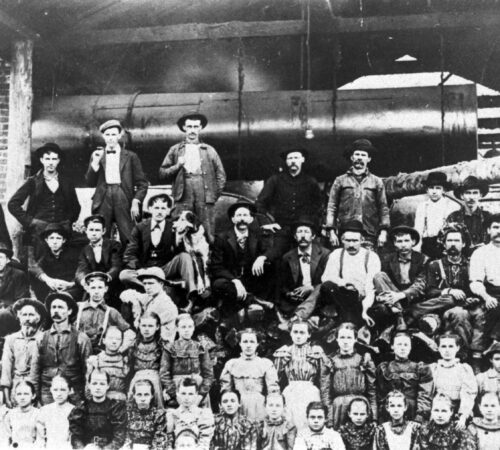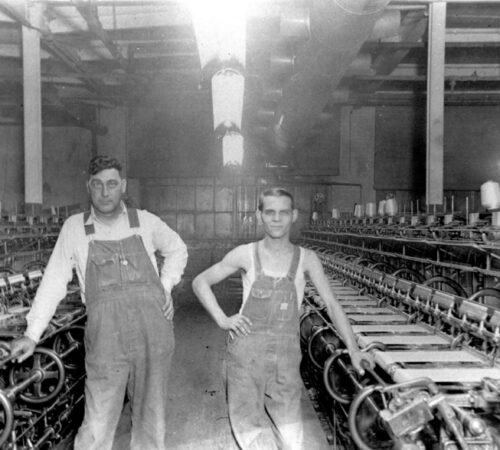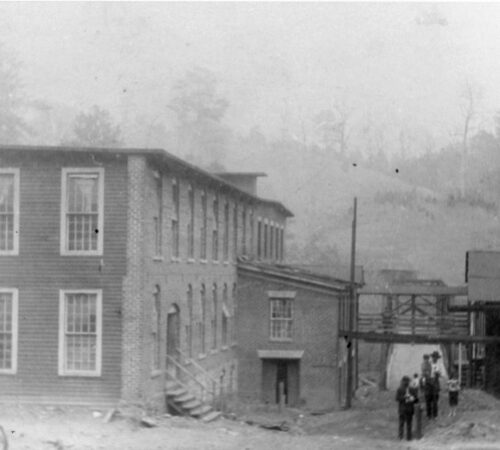This community’s lone mill operated for 130 years before finally shutting down.
Visit
Things to Do
- Historic Banning Mill, 205 Horseshoe Dam Road: Visit the historic Banning Mill situated on Snake Creek. This site was home to textile manufacturing for 130 years before finally shutting down in the 1970s. The remote site can be accessed via hiking trails after paying a small fee to the Historic Banning Mills resort.
- McIntosh Reserve Park, 1046 West McIntosh Circle: The McIntosh Reserve Park is 527 acres packed with history, trails, a splash water park, pavilions, and sweeping frontage on the Chattahoochee River. The park is a favorite of hikers and equestrian riders.
History
In 1849, Bowen Mill started manufacturing along Snake Creek in Whitesburg. The mill manufactured skeins of coarse yarn used in osnaburg, grain sacks. When the mill burned down, in 1851, the Bowen brothers sold their assets to William Amis who reopened the mill in 1866 under the name of Carroll Manufacturing.
In 1880, the mill changed hands again and became Hutcheson Mill, which manufactured cotton sheeting and shirting fabric. Hutcheson Mill, over the next fifteen years, became an innovative enterprise powered by electricity. By 1895, Hutcheson’s textile mill had 5,000 spindles, 240 employees, and 1,300 acres.
Sold in 1921, the mill took on the name Banning Mill. Between the 1930s and 40s, during the Great Depression through World War II, Banning Mill closed and reopened many times. By the 1950s, Banning Mill made yarn for carpet but despite their effort to become innovative, the mill closed in 1971, after 130 years of operation.
In the late 1940s, A.L. Fuller and Charlie Goodroe established a cotton mill, called Virginia Manufacturing Company, to spin yarn in downtown Whitesburg. One of the most common jobs for women working in cotton mills during this time was operating the spinning frame. A former spinner recalls, “My dad didn’t want me to spin, because he said it was too hard. And spinning was hard, but I loved it.”
James Briggs eventually bought the company to add to his franchise, which included mills in Tallapoosa and Columbus, Georgia. He added a braid mill and started manufacturing cords for Venetian blinds, shipping the completed cords to the Tallapoosa plant for assembly. Later, Briggs sold his company to Gibson LaFoy, Ralph Hart, and Martha Arnold who continued cord manufacturing under the name West Georgia Mills, Inc. After the mill burned down, the three stockholders sold their company to Willington Technical Industries, who went through a series of name variations. Willington rebuilt the mill, moving it from its original location downtown to Willington Mill road.
Charter Trail Members
Resources to Explore
Click on the following links to learn more about this region.
- Carroll County Driving Tour
- Facts for Kids
- Digital Library of Georgia
- Georgia Archives Virtual Vault
- Georgia Historical Society
- Carroll County, New Georgia Encyclopedia
Back to Community List
Email the Trail at wgtht@westga.edu or visit our Contact Us page for more information.



